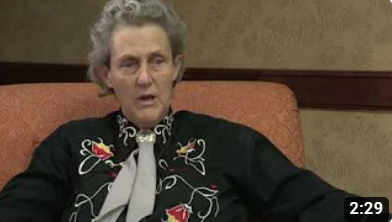 Endangered livestock enthusiasts, ties to history and a few favorite things led Brent Wittenbraker to go all-in with heritage breeds. The southern Indiana landscaper and his family have a growing homestead, with heritage livestock at the heart of their operation.
Endangered livestock enthusiasts, ties to history and a few favorite things led Brent Wittenbraker to go all-in with heritage breeds. The southern Indiana landscaper and his family have a growing homestead, with heritage livestock at the heart of their operation.
The family currently has six head of Lincoln Red cattle rated as Critically Endangered on the Conservation Priority List (CPL). They are eagerly awaiting calving season, which should grow the herd to nine. Brent purchased his cattle in 2023 from Livestock Conservancy member Sarah Pedelty in Chatfield, Minnesota. He says the guidance and information she provided has been immeasurable. Brent connected with Sarah through The Livestock Conservancy’s annual Directory: Rare Breeds and Products Resource Guide available online year-round.
Sarah invited him to Pedelty Lincoln Reds Farm to see the pure-bred cattle in person. “When I saw them, I just fell in love with them. They are beautiful animals, a deep, dark, cherry red color,” he recalls.
“One of the things I love is Brent did not come from a farm background, so he had no preconceived ideas; he just looked at everything with fresh eyes,” Sarah remembers. “He has become so enthusiastic and wants to help promote the breed. It’s always fun to see other people that love these cattle as much as I do.”
Sarah serves as the secretary for the North American Lincoln Red Association. First developed in Britain, the breed has been noted in documents dating to 1695. Today, they are also considered critically endangered by the British Rare Breeds Survival Trust. The hardy breed is noted for docile temperaments, rapid growth, ample milk production and good carcass quality.
Brent did his homework to find a cattle breed for Wittenbraker Farms that was a good match. “We looked at several other breeds and this one just really fit our family. We were looking for something gentle and it was important for us to find an animal that was able to grow on pasture alone,” he explains.
He admits the breed’s name may have also helped sway him to start with Lincoln Reds. “Yeah, Abraham Lincoln,” he adds. “This was his childhood stomping grounds.” Honest Abe grew up about two dozen miles from Brent’s homestead.
The family has also added Bourbon Red turkeys designated as Watch on the CPL to the homestead. And, they are considering rare-breed sheep and Threatened Red Wattle hogs to accompany farm-to-table heirloom vegetable and beekeeping efforts. In each case, he says members of The Livestock Conservancy have shared information, answered questions and helped him gain a sense of mission.
“If you’re going to raise something, it might as well be special and unique,” he shares. “Our whole concept here at the farm is that we want to put back into the land and the agricultural industry, so to speak. With the livestock, the only way to keep these genetics alive is for people to keep buying them.”
He accepts another charge, too. “Educating people on these breeds that they exist and they are awesome breeds is one of the biggest things,” he says, adding he has eyes on establishing a breeding stock program to become a source of Lincoln Reds for others in the Midwest.
Sarah notes Lincoln Reds are a great breed for those looking to add cattle to their farm, ranch or homestead for the first time. “They are a perfect starter breed,” she says. “They are great mothers, put on fat very easily and are really easy to handle.”
Brent also hopes to someday take his Red Lincolns to the show ring. “My ultimate goal would be to show at the North American Livestock Expo,” he says. Louisville, Kentucky is less than 100 miles further up the road.



